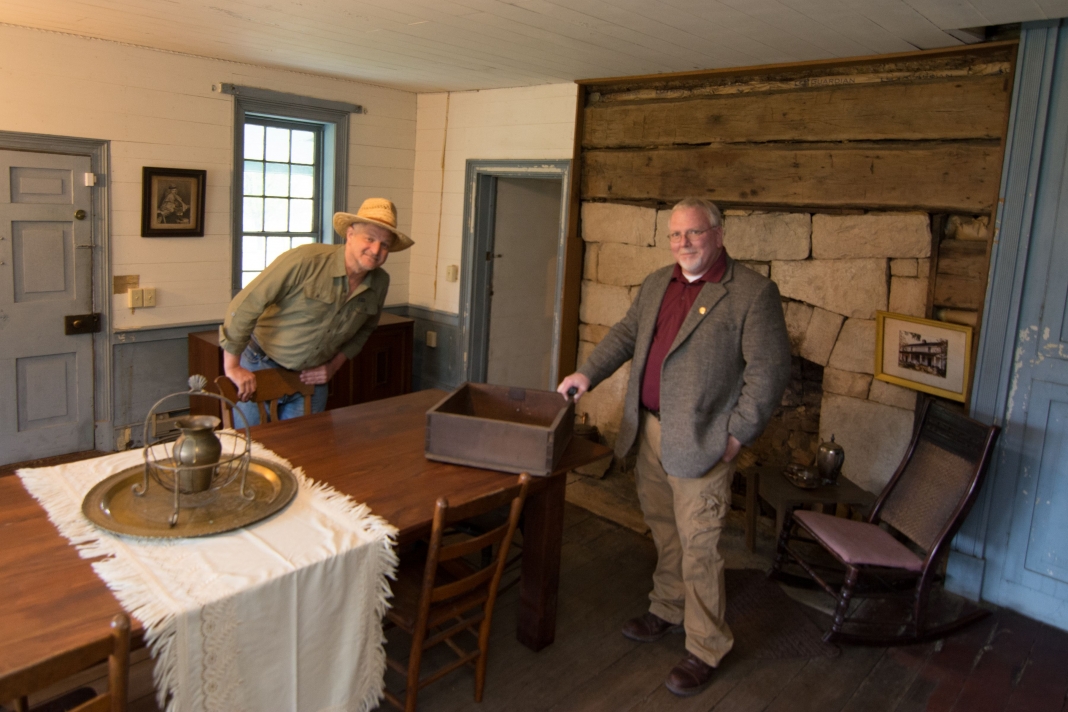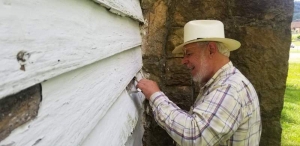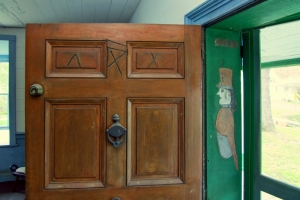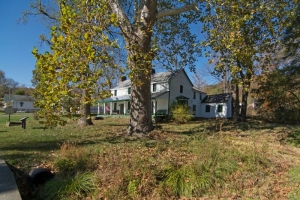A room built from a boat. Folk art from the Civil War. A carving that appears to predate all else by a century. The Tyree Tavern is full of mysteries, and author and historian David Sibray is welcoming scholars to investigate while the landmark is on the market.
In addition to engaging some of the region's most knowledgeable historians, Sibray, who's also an agent for Foxfire Realty, is inviting the public to tour the old tavern September 19 for a socially distanced open house.
A specialist in rural and historic real estate, he says the property is among the most remarkable with which he's worked.
"I think the sheer scope of activity at the tavern over the centuries is part of what makes this property so special. The history of this place is just plain big," Sibray said.
"You've got important prehistory and an astonishing Civil War-era history and you've got full immersion in the Age of Western Expansion, which followed the Louisiana Purchase. During that time, thousands of travelers lodged here during the westward migration."
One of the oldest historic landmarks in southern West Virginia, the log-built inn is noted for its intact character, evident in clapboard siding from the early 1800s and massive hewn timbers and rough-worked hearthstones.
Randy Burdette, a Foxfire agent Sibray often collaborates with, agrees the house is an enigma on many levels, though he says he's particularly interested in the Civil War graffiti and folk art inscribed in the walls.
"Especially the carving of the soldier," Burdette said. "Was it carved by one of the soldiers who was stationed here during the Civil War? Why is it depicted in a uniform that appears to be from an earlier period?"
Sibray and Burdette have welcomed several historians to the property. Appalachian conservator Jim Costa explored the house in search of tell-tale signs of a date of construction, while Gary M. Wilcox photographed and published an online presentation about its history on Youtube.com.
"Costa supported the idea that the wood siding was milled in the very early 1800s based on saw marks and scoring that appears along the lower edge of the bevel on the boards," Sibray said.
Perhaps one of the greatest mysteries presented in the house is the origin of off-level rooms in the rear wing addition. One story is that the rooms were built of bent lumber salvaged from a boat that had sailed upstream to the Kanawha Falls. There it was disassembled and carried overland 10 miles to the tavern.
Another mystery concerns the strange marks or slashes on the walls and doors in some rooms, which are supposed by some to be sword or bayonet marks wrought by soldiers during the Civil War when the tavern was headquarters for both northern and southern armies.
The number of important personages who lodged at the tavern was also among the reasons it was added to the National Register of Historic Places in 1978. Statesmen Henry Clay (1777–1852) and Daniel Webster (1782–1852) were documented guests, as was vice-president John C. Breckinridge (1821–1875).
For many years the tavern was known as the Halfway House on account of its location along the Old State Road midway between Lewisburg and the Kanawha Salines.
Listed for $200,000, the property has attracted the attention of potential buyers who have been considering its functionality as both a residence or a lodging facility serving visitors to the nearby New River Gorge National Park and Preserve, which is slated to become a national park.
Sibray said Foxfire Realty will be hosting the open house between 10 a.m. and 5 p.m. Saturday, September 19. For more information on the event, Sibray may be reached at 304-575-7390.
For more information on the sale of the property, visit Historic Tyree Tavern. A copy of the nomination form for the National Register is located here: Tyree Tavern/Halfway House.
Built in 1800, historic New River Gorge landmark for sale

A national historic landmark built in 1800 near the northern end of the New River Gorge in West Virginia is for sale. The Tyree Tavern, which might best be described as a stagecoach inn, boasts a trove of period artifacts, including sword marks, folk art inscribed in the carpentry, and a sentinel sycamore tree believed to be more than than 200 years old itself. Read the full story here.
Sign up to receive a FREE copy of West Virginia Explorer Magazine in your email weekly. Sign me up!






